How to Teach Odd or Even: A Fun and Engaging Guide for Parents and Teachers
With the right tools and a dash of humor, you can turn this mathematical concept into an exciting adventure for your young learners. In this blog, we’ll explore various strategies, activities, and tips for teaching odd and even numbers.
What Are Odd and Even Numbers?
Before we dive into the fun stuff, let’s quickly recap what odd and even numbers are. An even number is any integer that is exactly divisible by 2 (e.g., 2, 4, 6, 8). Meanwhile, an odd number is not divisible by 2 (e.g., 1, 3, 5, 7). In simple terms, even numbers have pairs, while odd numbers are the loners who hang out by themselves.
Why Is It Important to Learn Odd and Even Numbers?
Understanding odd and even numbers is a fundamental math skill that lays the groundwork for more advanced concepts. It helps kids:
- Develop number sense
- Understand patterns
- Enhance problem-solving skills
And most importantly, it prepares them for future mathematical adventures, from division to algebra and beyond.
Activities for Teaching Odd and Even Numbers
1. Odd and Even Craft Activities
Crafts are a great way to reinforce learning. Have students cut out shapes or objects and place them into odd or even categories.
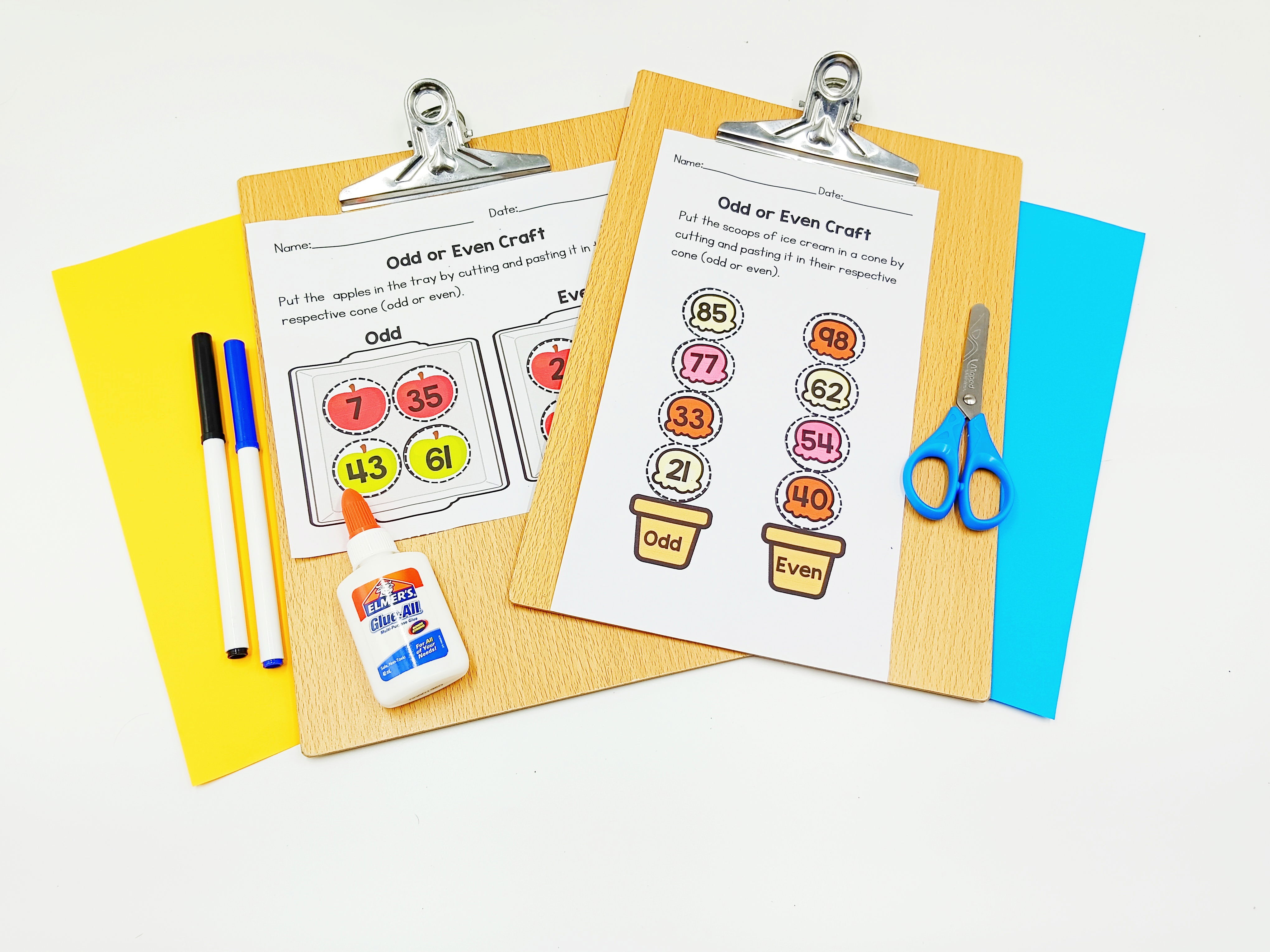
2. Cut and Paste Activity
Hands-on activities like sorting numbers into odd and even categories are perfect for reinforcing the concept while helping develop fine motor skills.
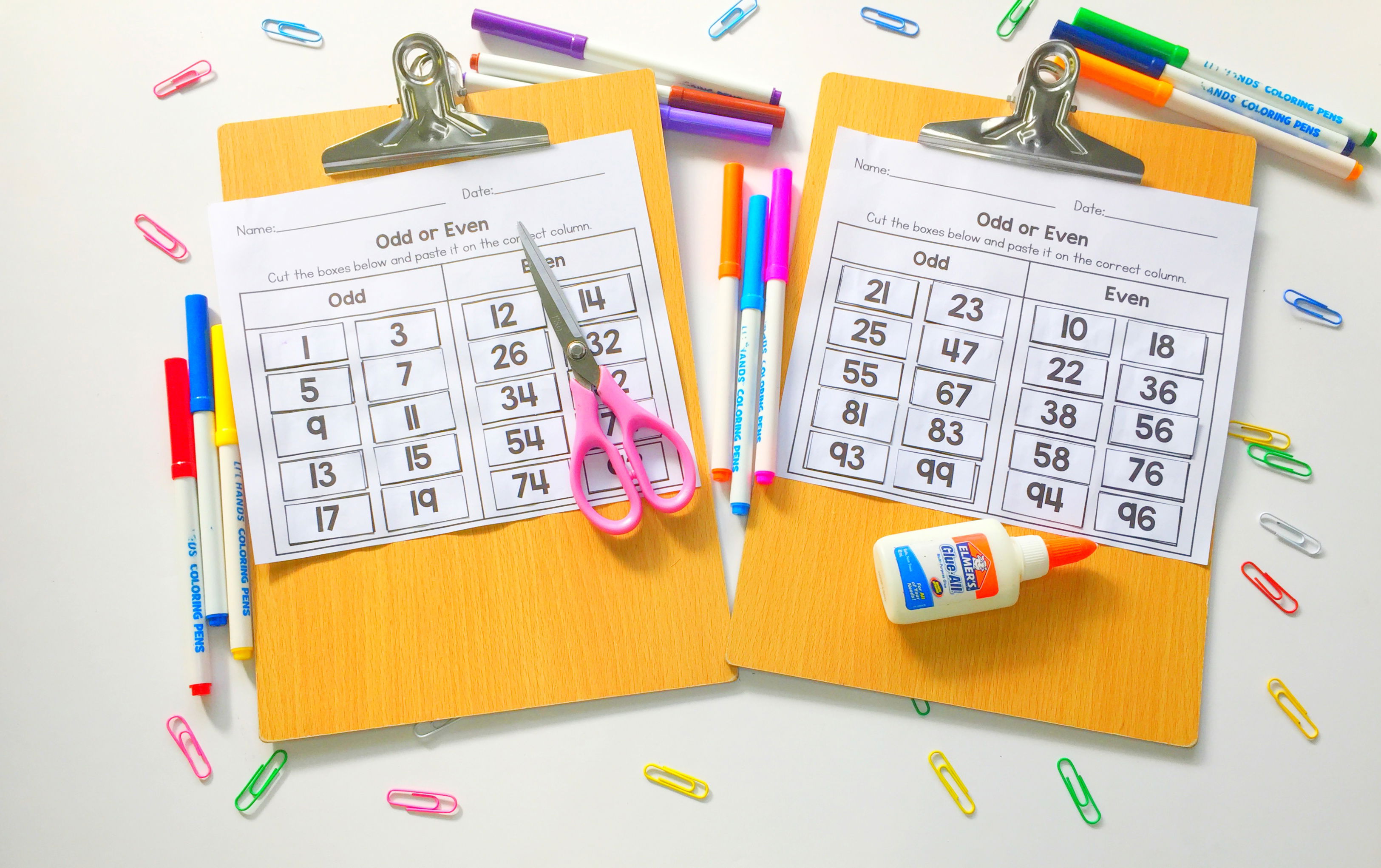
3. Coloring Activities
Coloring charts based on whether the number is odd or even is a fun, interactive way to practice these skills.
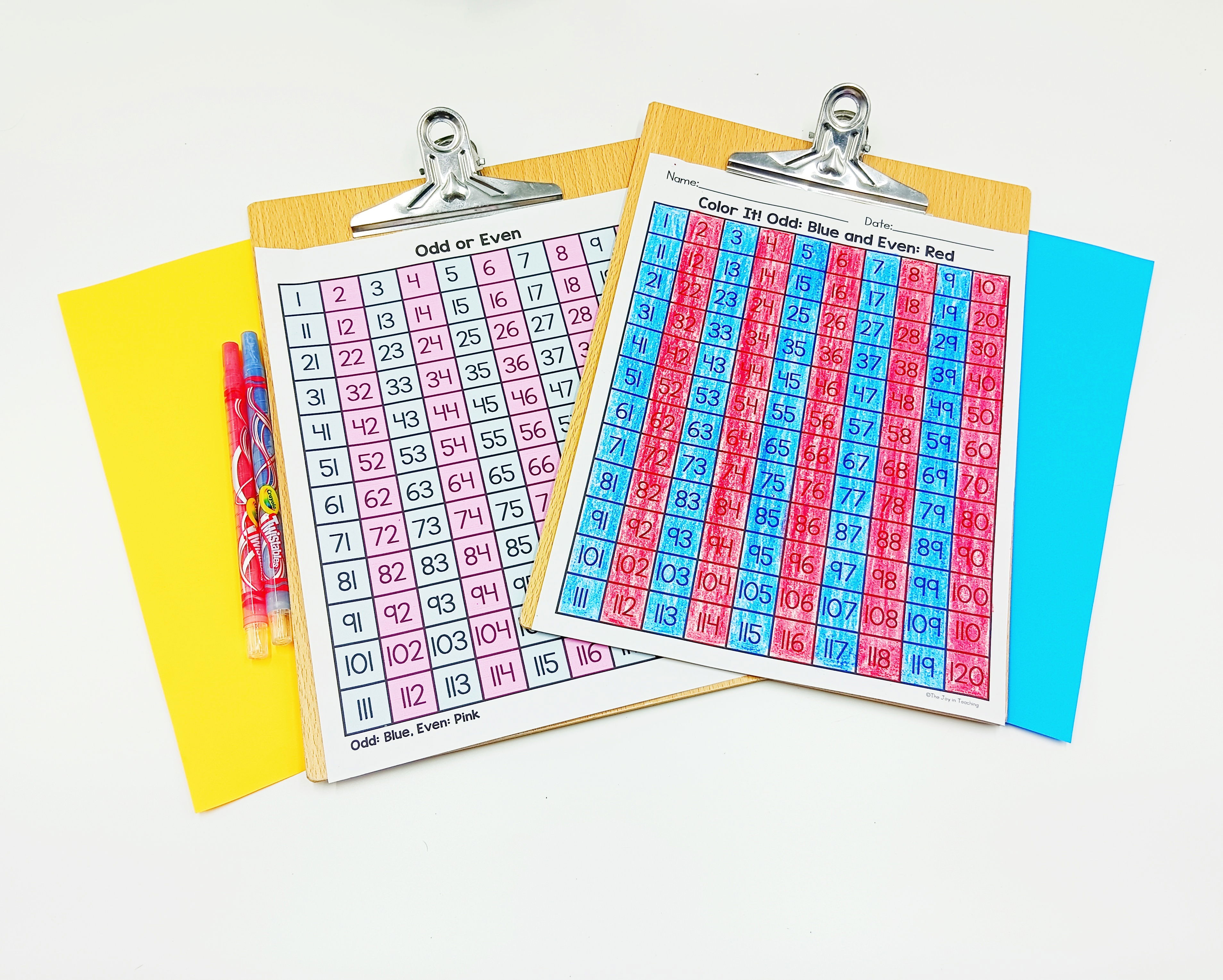
4. Counting Activity and Identification
Visual pictures are great for learners to be engaged in learning odd or even.
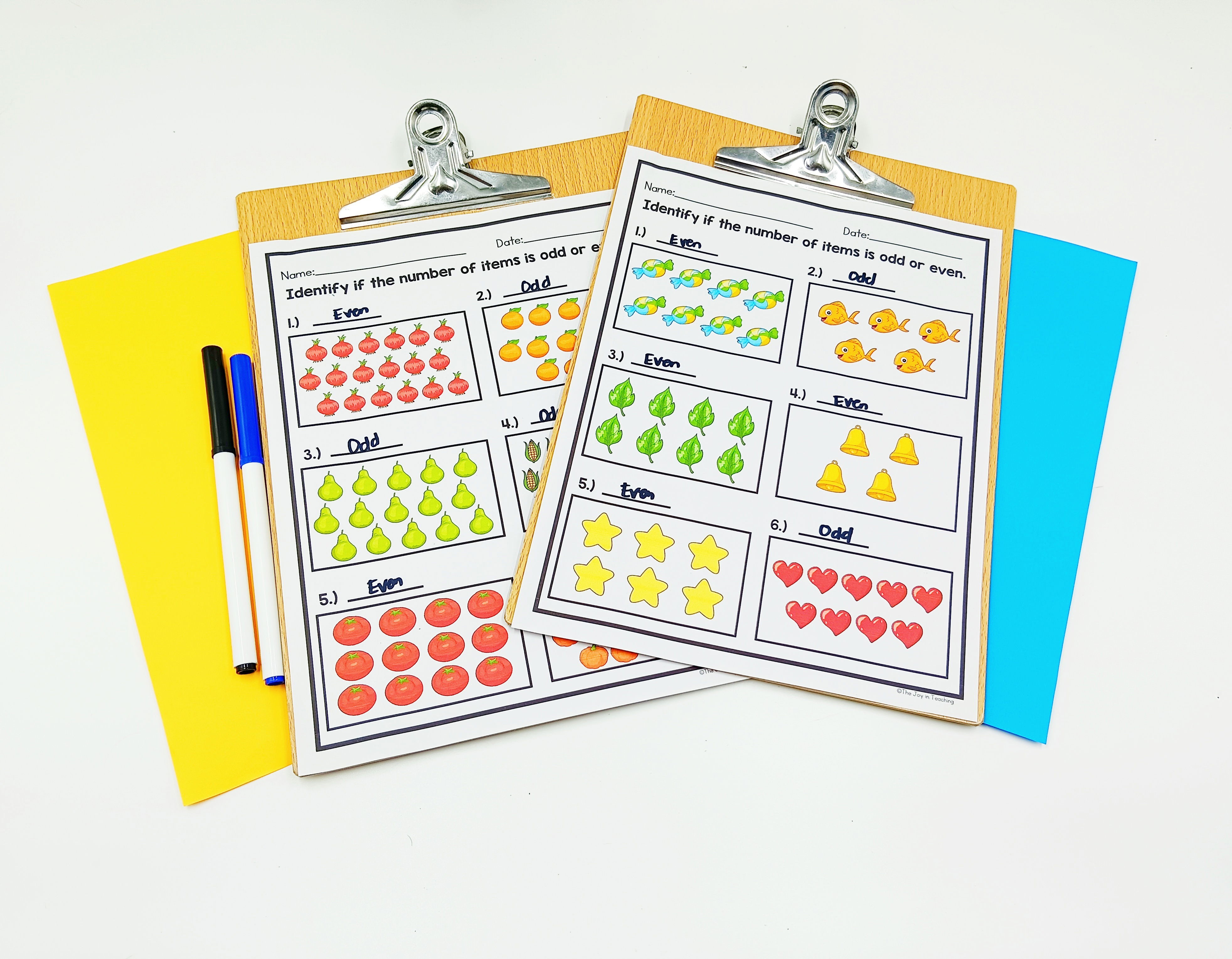
5. Homework and Assessments
Use worksheets as homework or assessments to track your students' progress. The answer key makes grading quick and easy, so you can monitor who needs extra help.
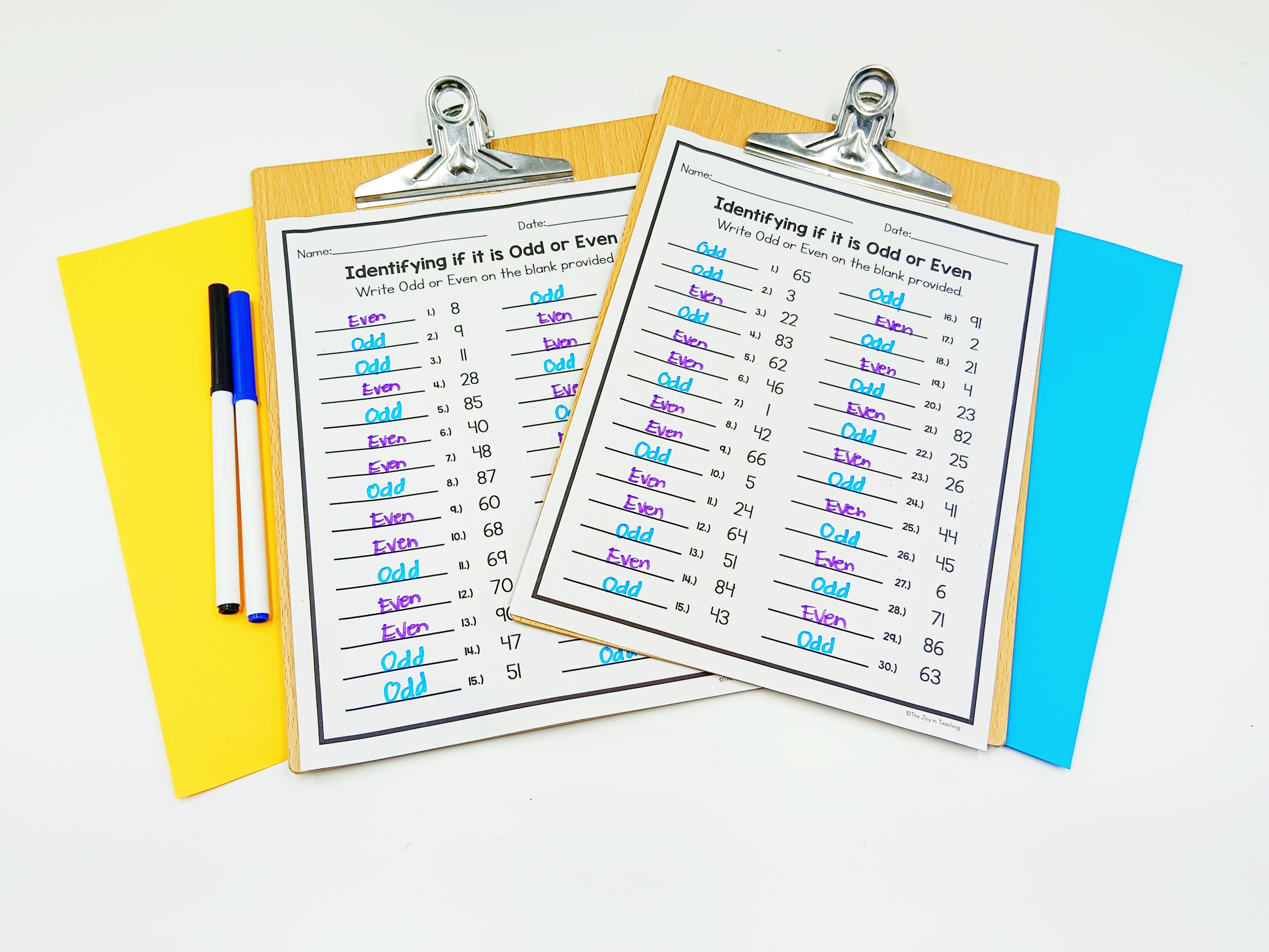
Tips for Parents
Parents, you play a crucial role in your child’s learning journey. Here are some tips to help teach odd and even numbers at home:
- Use Everyday Objects
Incorporate learning into daily activities. Count objects around the house – pairs of shoes, fruit in a bowl, or toys. Ask your child to determine if the number is odd or even.

2. Make It a Game
Turn chores into a game. Ask your child to sort laundry by odd and even numbers of socks or count how many steps it takes to walk to the mailbox, and identify if the number of steps is odd or even.

3. Reading Time
Find books that incorporate counting and numbers. Reading stories that include these concepts can help reinforce what they’ve learned in a fun and relaxing way.

4. Cooking Together
Use cooking as an opportunity to practice counting. When measuring ingredients, ask your child to determine if the number of cups or spoons is odd or even.

Making Learning Fun: Tips and Tricks
Teaching odd and even numbers doesn’t have to be a snooze-fest. Here are some tips and tricks to keep your students engaged and excited about math:
- Use Visual Aids
Kids are visual learners. Use colorful charts, drawings, and objects to help them see the difference between odd and even numbers. For example, create a chart with pairs of socks – if there’s a leftover sock, it’s odd!
2. Incorporate Games
Turn learning into a game. Play "Odd and Even Bingo" where students mark their cards based on whether the number called out is odd or even. The first to get a line wins!
3. Interactive Worksheets
Use interactive worksheets as tools to make learning even more fun. Have a classroom challenge to see who can correctly complete the most exercises in a set time.
4. Story Problems
Create engaging story problems. For instance, "Tom has 7 apples, and he wants to share them with his friend. Can they both get an equal number of apples?"
5. Physical Activities
Get your students moving! Have them form pairs with their classmates. If there’s an extra student without a pair, the number of students is odd. This physical representation helps solidify the concept.
Conclusion
Teaching odd and even numbers can be an enjoyable and rewarding experience for both you and your students. By using engaging activities, visual aids, games, and more, you can make learning these concepts fun and interactive.
Follow Me for More Teaching Tips with Joy For more tips, resources, and a daily dose of teaching joy, follow me on:
Got questions or want to share your success stories? Drop me an email at thejoyinteaching@gmail.com. I love hearing from fellow educators and parents! Happy Teaching!
Joy Medalla
The Joy in Teaching 💛